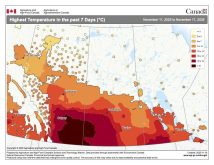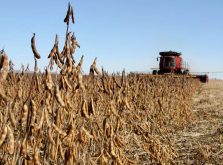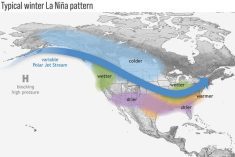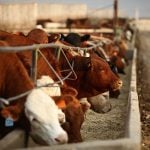The U.S. government said July 9 that a dreaded El Nino weather pattern is developing, putting countries from Asia to North America on alert for meteorological havoc to crops, infrastructure, ports and mines.
The phenomenon, caused by a warming of the seas in the Pacific, has already brought drought to Australia and delayed monsoon to India. It’s impact could be felt in Latin American and North America by the fall.
The Climate Prediction Center, an office under the U.S. National Oceanic Atmospheric Administration, said in a monthly report that the equatorial Pacific Ocean has “transitioned… to El Nino conditions.” The trends favour a “weak-to-moderate strength El Nino” into the northern hemisphere winter of 2009, “with further strengthening possible thereafter.”
Read Also
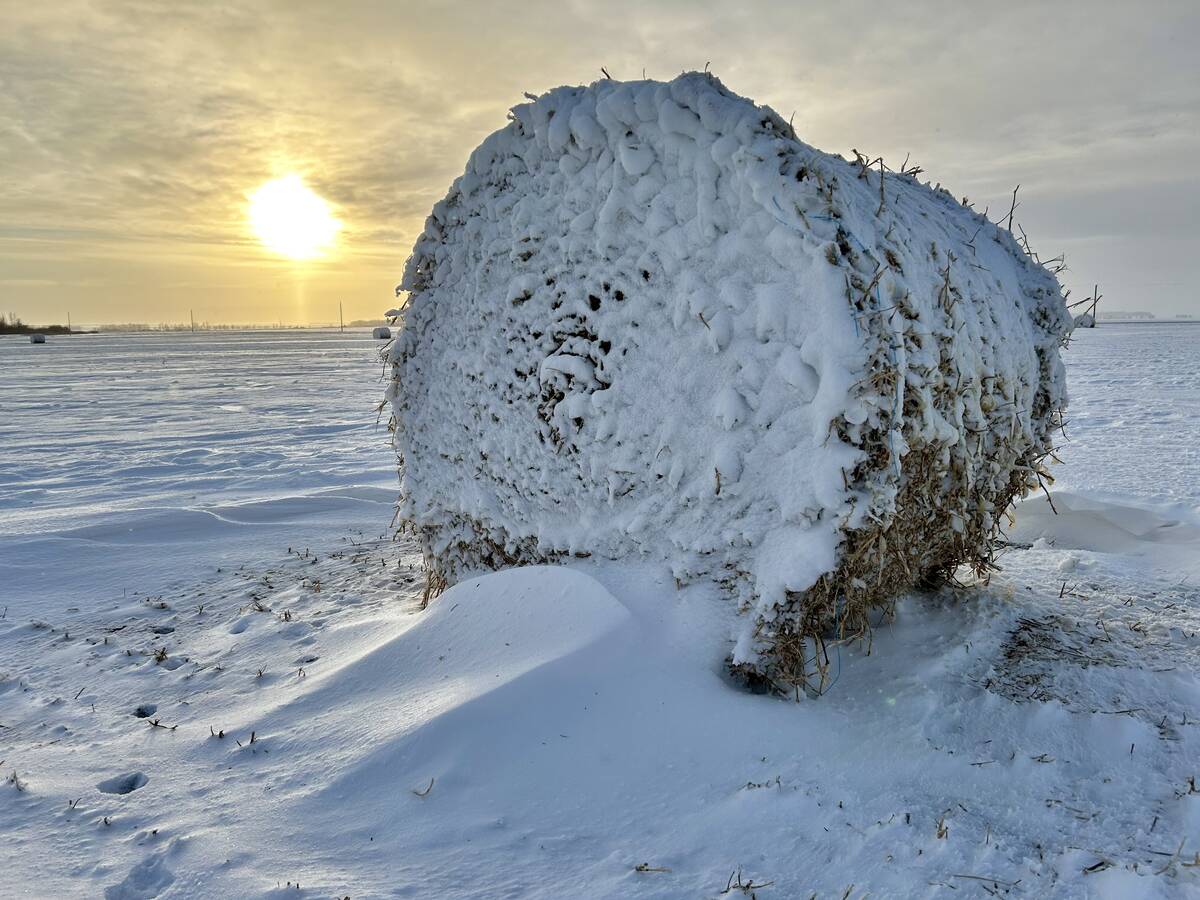
Prairie winter snowfall forecast 2025-2026
How much snow should farmers in Alberta and elsewhere on the Canadian Prairies expect for the rest of December 2025 and into January-February 2026?
Australia’s Bureau of Meteorology said in a report there was “very little chance of the current development (of an El Nino) stalling or reversing.”
An El Nino-spawned drought would pose a major risk to wheat production in Australia, affect palm oil output in major producers Malaysia and Indonesia, and hit rice production in the Philippines, the world’s biggest importer of the staple.



